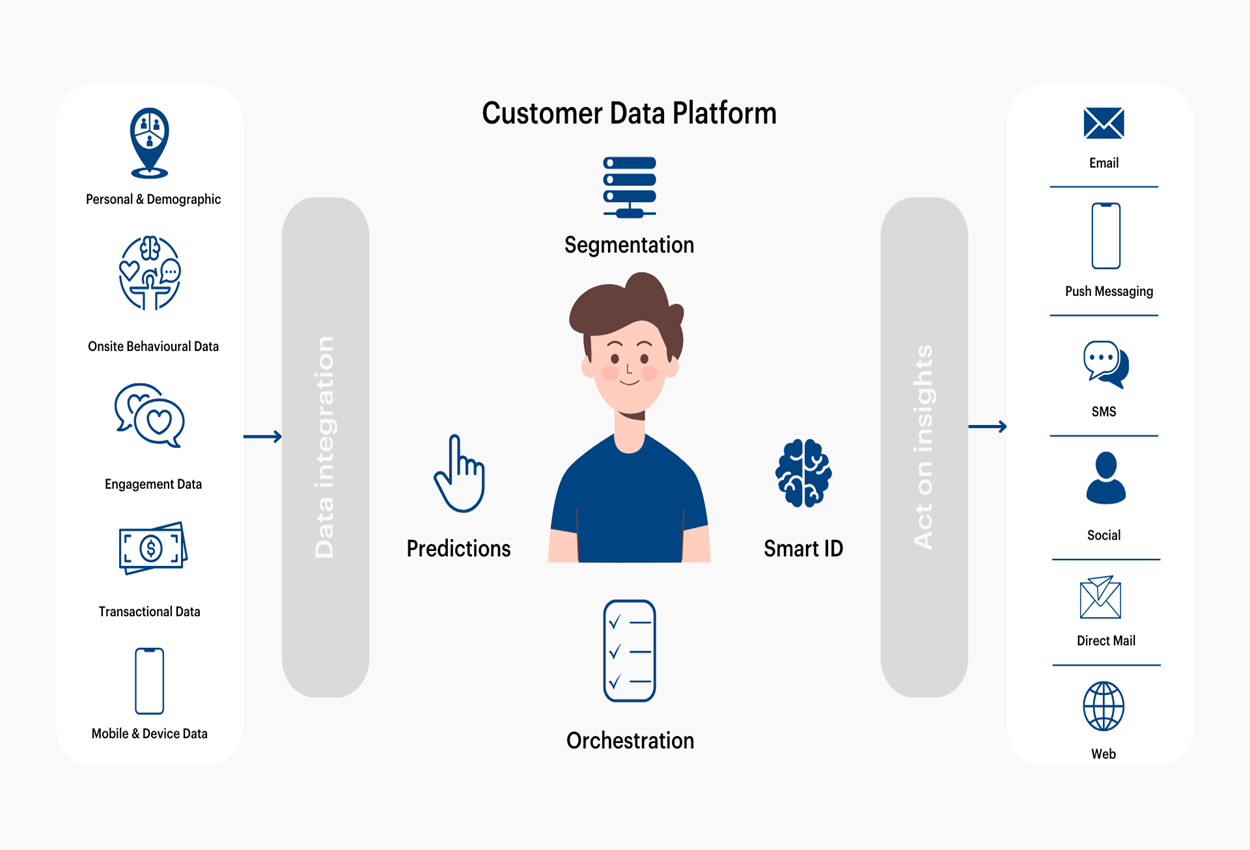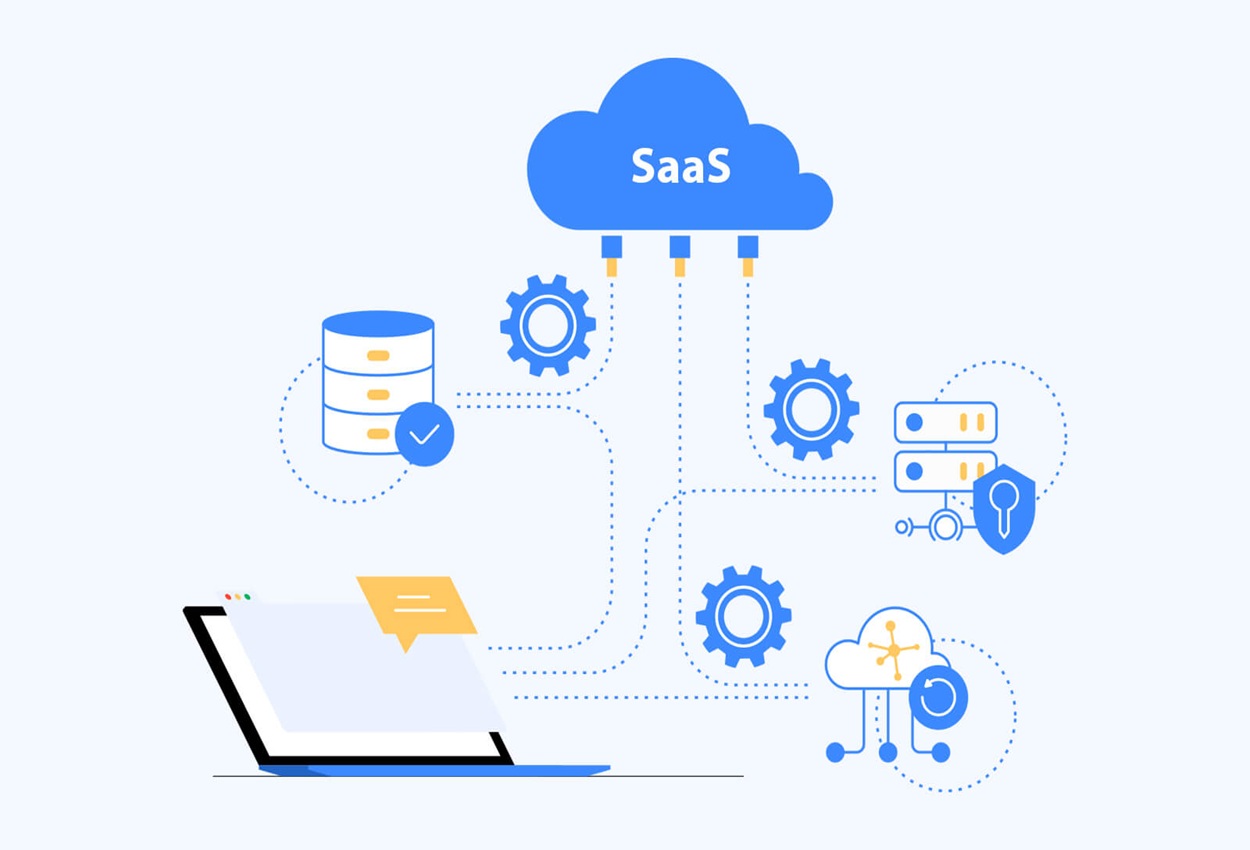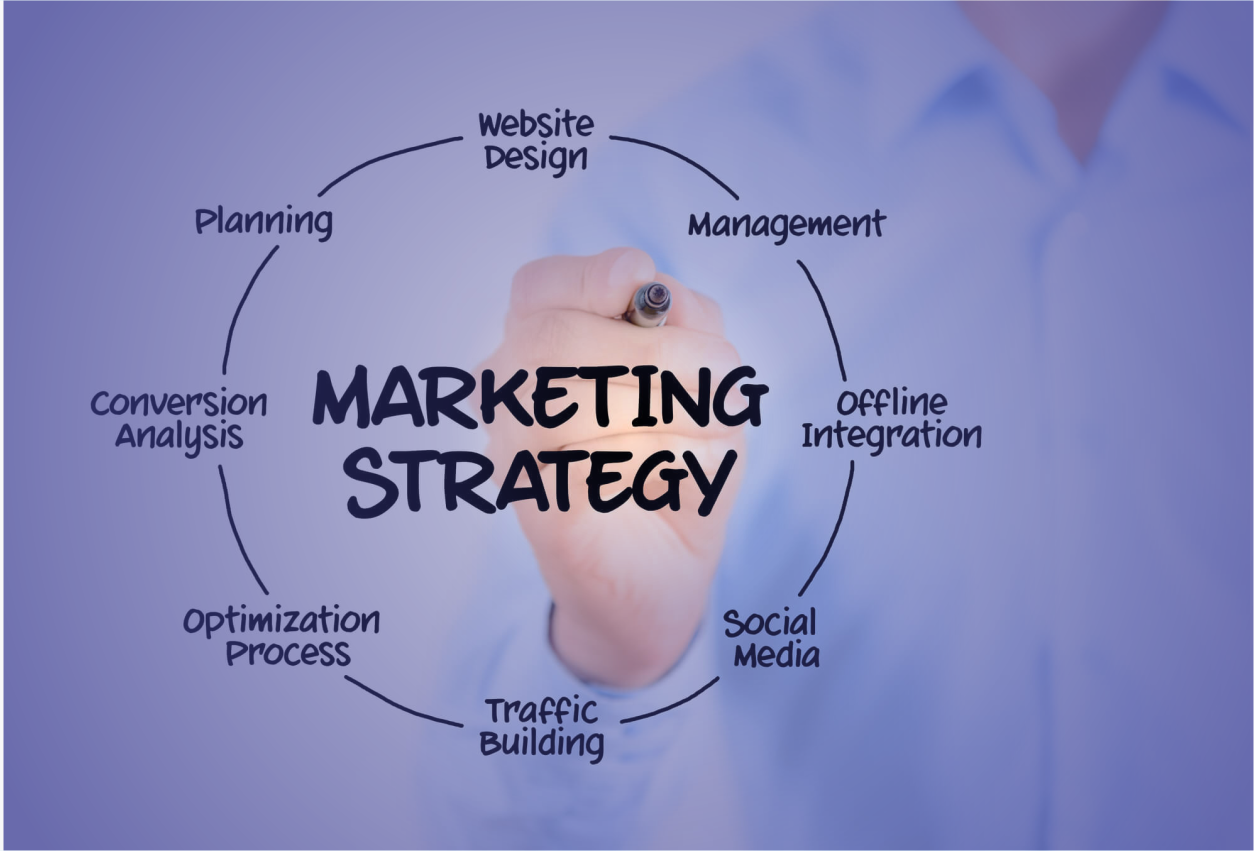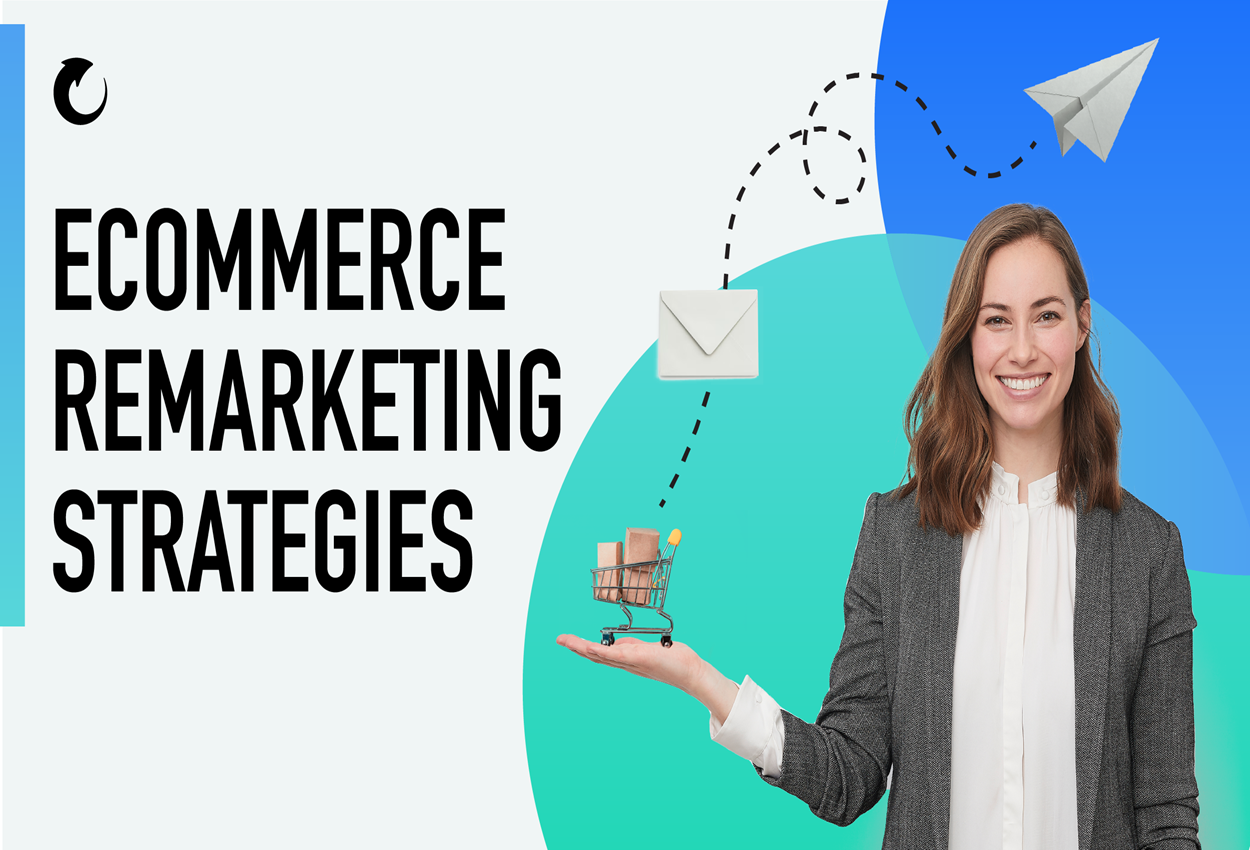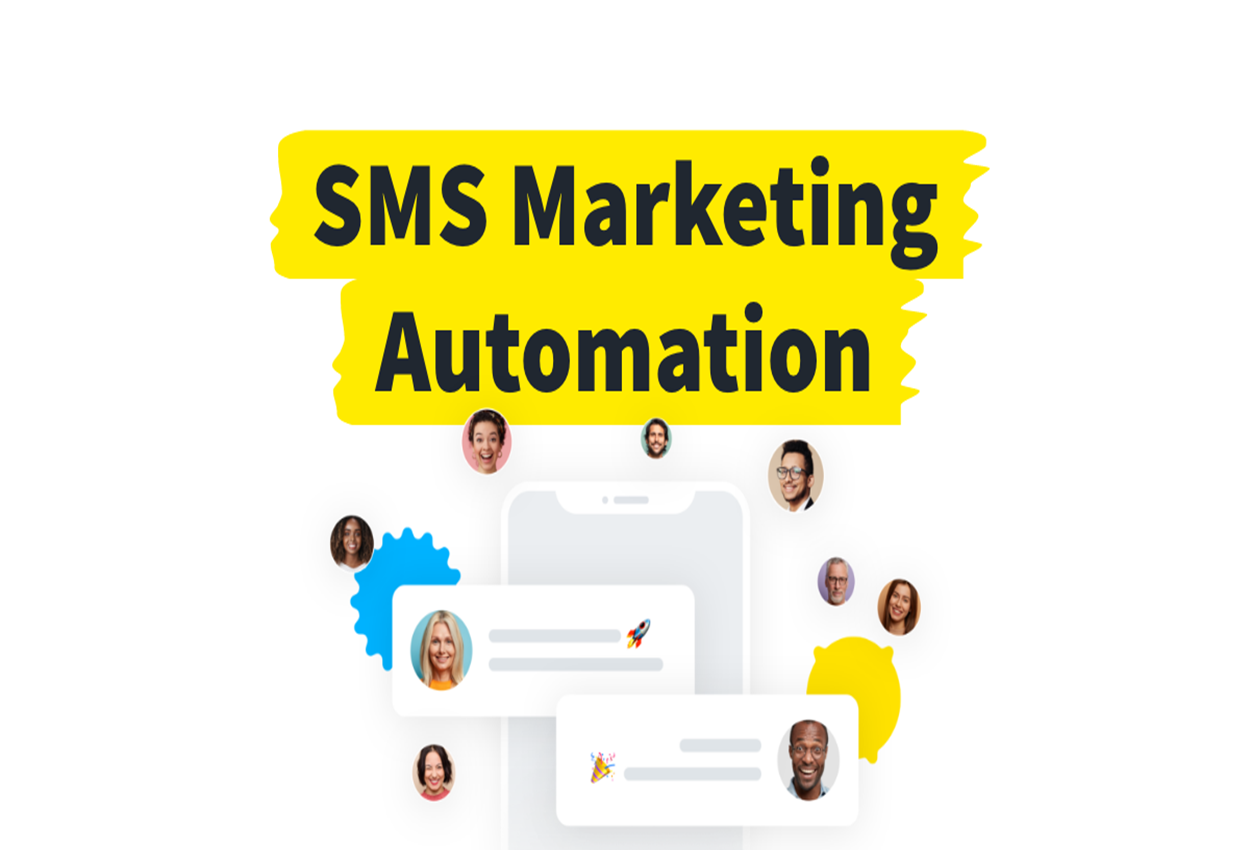What Is a CDP and Why Marketers Are Adopting Them Fast
Understanding your clients is not only advantageous in today’s highly digital industry, but also essential. Marketers face an overwhelming amount of data due to the proliferation of online channels. The problem is that the majority of that data is dispersed over social media, mobile apps, CRMs, e-commerce dashboards, and email platforms. A Customer Data Platform (CDP) can help with that.
So, in terms of digital marketing, what is a CDP? To produce a single, actionable customer view, a CDP is a software program that collects, aggregates, and organizes customer data from multiple sources. It is a game-changer for the consumer experience and the hub of data-driven marketing. Because of this, more marketers are quickly implementing them, ranging from Fortune 500 companies to small startups.
This article explores what a CDP is, how CDPs work in marketing, their many use cases across industries, and why CDPs are quickly becoming essential in the marketer’s toolbox.
What Is a CDP?
A Customer Data Platform (CDP) is a software system that centralizes customer data from all touchpoints into a single, unified profile. Think of it as the ultimate customer data integration platform. It cleanses, standardizes, and enriches your data so your marketing tools can work smarter, not harder.
Unlike a CRM, which focuses mostly on known contacts and sales interactions, or a DMP (Data Management Platform), which is used for anonymous data in advertising, a CDP is purpose-built for marketing. It combines data from first-party, second-party, and third-party sources and makes it available in real time for campaign automation and personalization.
As brands push for digital transformation, CDPs are stepping into the spotlight, empowering marketers to run omnichannel campaigns, track customer journey mapping, and deliver personalized customer experiences like never before.
How CDPs Work in Marketing
To appreciate the power of CDPs, you need to see how they function behind the scenes. CDPs ingest data from various sources like your ecommerce platform, CRM, email service provider, and ad tools. That data includes everything from customer behaviors and transactions to device information and engagement history.
The platform then uses identity resolution to match disparate data points to individual users. From there, advanced analytics, segmentation, and automation features allow marketers to trigger actions like personalized emails, retargeting ads, or product recommendations.
With CDP platforms with real-time analytics, campaigns can adapt in the moment based on new data. When you integrate a CDP with predictive analytics, it can even anticipate customer needs, boosting engagement and conversions across the board.
CDP vs CRM for Customer Retention
One common confusion is CDP vs CRM—which one is better for customer retention? While CRMs are great for managing sales pipelines and customer service workflows, they fall short in marketing automation and personalization at scale.
A CDP, on the other hand, gives you a 360-degree view of the customer journey. It allows marketers to build audience segments based on actual behaviors, not just demographics. This means you can proactively engage customers before they churn—whether through email, SMS, or push notifications.
If customer loyalty is your goal, then the best CDP for customer loyalty programs will do far more than a CRM can.
CDP Use Cases Across Industries
One of the strongest reasons for the surge in adoption is the sheer flexibility of CDPs across different sectors. Let’s explore a few:
CDP use cases in retail include delivering hyper-targeted promotions based on purchase history, browsing behavior, and even store visits. For ecommerce brands, a customer data platform for ecommerce can recommend the right product at the right time, drastically improving conversion rates.
In banking and finance, CDP examples for banks show how these platforms help build risk profiles, tailor financial offers, and detect fraud patterns early.
In the travel industry, CDPs analyze booking behaviors, seasonality, and preferences to personalize offers for flights, hotels, and packages.
In healthcare, a customer data platform for healthcare helps clinics personalize outreach, appointment reminders, and even educational content—all while ensuring compliance.
And for telecoms, CDP use cases in telecom include reducing churn, upselling plans, and improving customer service by giving agents real-time access to a customer’s entire journey.
Why CDPs Are Winning in 2025
The growth of CDPs isn’t just hype—it’s based on real, measurable results. In an age where privacy regulations like GDPR are strict, CDPs offer CDP solutions with GDPR compliance out of the box. This gives marketers confidence when collecting and activating customer data.
Secondly, the rise of AI in marketing is transforming CDPs into even smarter systems. Today’s AI-powered customer data platforms can uncover hidden insights, automate testing, and predict outcomes—without manual input. These CDP platforms with AI don’t just store data—they help you act on it intelligently.
Thirdly, integration is easier than ever. Whether you want to connect with your CRM, CMS, or ad platforms, today’s cloud-based customer data platforms offer seamless APIs and plug-ins. Even CDP software for beginners now comes with step-by-step wizards, making setup painless.
Choosing the Best CDP Platform for Your Business
If you’re ready to explore your options, the good news is there are many affordable customer data platforms tailored for different needs.
For small businesses, the best CDP tools for small business focus on simplicity and cost-efficiency. These tools often include drag-and-drop automation builders, pre-built templates, and integrations with Shopify or WooCommerce. If you’re new to the space, there are even free CDP tools to try before committing.
Startups looking for scale will benefit from CDP solutions for startups that offer both flexibility and power. If your business is B2B-focused, CDP software for B2B marketing often includes account-based targeting, lead scoring, and sales enablement features.
For those looking for deep insights, best customer insights tools integrated with a CDP can provide dashboards that track KPIs like LTV, AOV, and churn probability.
When comparing platforms, check out the top CDP vendors list and review side-by-side data with the top customer data platforms compared. And don’t overlook CDPs that include marketing automation examples, so you can envision how you’ll use the software in real scenarios.
CDP vs DMP Explained
A lot of marketers ask about CDP vs DMP. Here’s the simple breakdown. DMPs are primarily built for third-party anonymous data, used in advertising networks for broad audience targeting. CDPs work with first-party data and create identifiable, persistent customer profiles, enabling true personalization.
If you’re running performance marketing, retargeting, and display campaigns, a DMP still has its place. But for long-term relationship-building and personalized customer experience, CDPs win hands down.
Real Business Results: How CDPs Improve ROI
Let’s talk numbers. Businesses that implement CDPs see huge improvements in return on investment. Why? Because they’re able to optimize spend based on real behaviors. With better segmentation using CDP tools for customer segmentation, campaigns become more precise. With customer journey mapping, you can eliminate friction points that kill conversions.
Brands using CDP marketing automation examples report up to 30% lifts in engagement and 20% higher customer lifetime value. With CDP platforms with automation, marketing teams can launch, test, and optimize campaigns at scale—no coding required.
These results are not just for enterprise players. Even low-cost CDP options now offer robust ROI for small ecommerce brands and growing startups.
CDPs and the Future of Marketing
The future of marketing lies in data, and CDPs are the key to unlocking it. Whether you’re working in retail, travel, healthcare, or finance, these platforms empower you to deliver meaningful experiences in real time. That’s why CDP for digital transformation is no longer optional—it’s essential.
Brands looking to stay ahead must learn how to choose a CDP platform wisely. You’ll want to look for scalability, AI capability, compliance features, ease of integration, and a supportive onboarding process.
Once selected, follow a CDP implementation guide to ensure success from day one. From mapping your data sources to integrating with your martech stack and building your first campaigns, proper planning is the difference between results and regret.
Conclusion
In a digital-first world, fragmented customer data is a silent killer of growth. CDPs offer a path toward unified, intelligent, and actionable data that drives marketing results. Whether you’re aiming to improve personalization, increase ROI, or simply keep up with modern consumer expectations, a CDP is no longer a luxury—it’s a necessity.
At Hryders.com, we believe the future belongs to marketers who understand their data, and act on it fast. With tools like enterprise-grade CDP platforms, even the most complex customer journeys can be tracked, analyzed, and optimized for impact.
Don’t wait until your competitors outpace you. Explore the best CDP for small ecommerce brands, try free CDP tools, and start building deeper relationships with your customers—today.
